Sourcing a period fireplace for your home
jamb.co.uk
We explore the history of fireplaces and how to find one to suit your space
Whether you’re toasting crumpets or simply warming your toes in front of the grate, there’s something so soothing and timeless about a fire. And even when not lit, they act as a focal point and visual anchor all year round. In addition, renovating period features like a fireplace will always add beauty and value to your home.
‘A beautiful chimneypiece will automatically bring a room to life,’ says Will Fisher of Jamb, specialists in sourcing fine antique fireplaces as well as creating historically accurate reproductions. ‘Always start with the chimneypiece when decorating,’ he advises. ‘It sets the scene and the entire tone of a room.’
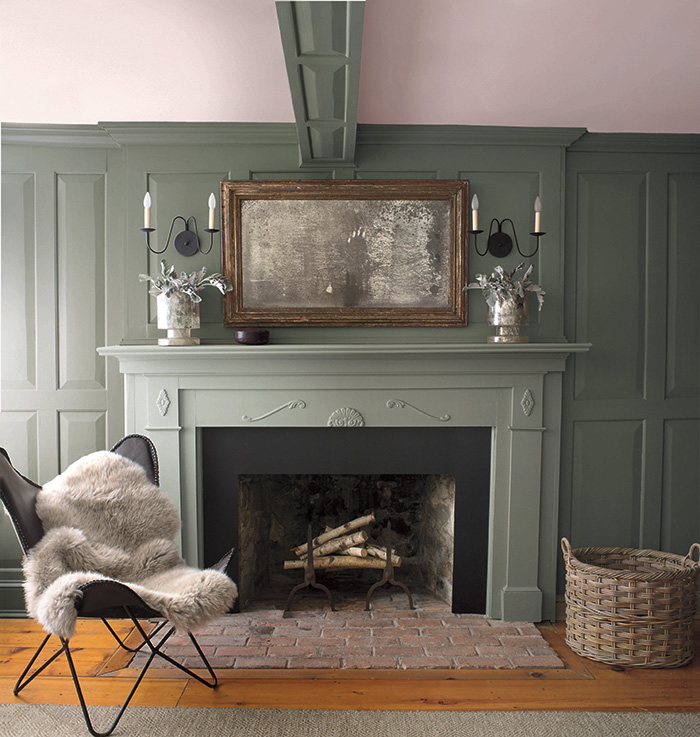
benjaminmoorepaint.co.uk
Size and status
Open fires were the principal means of heating homes right up until World War I. ‘The fireplace was carefully graded according to the status of the room,’ explains Kit Wedd, director of Spurstone Heritage, a historic buildings advice consultancy, and author of The Victorian House. ‘There is said to be masculine and feminine territory – so in dining rooms, where alcohol is consumed and men sit up late enjoying port and cigars, there were often big, black marble chimneypieces. The drawing room is said to be a more feminine realm, where guests are received and afternoon tea is taken, so fire surrounds tended to be paler, in white marble for example, with prettier designs. They would have the largest grates and the most elaborate detail.’
Lots of chimneypieces that appeared to be marble were in fact slate, painted to look like marble. These were called ‘enamels’. ‘If the house is a modest terraced house and appears to have an elaborate marble chimneypiece, it’s likely to be slate that has been painted to look like something posher,’ reveals Kit. Bedroom fireplaces were smaller, then attic fireplaces – if there were any – were tiny, because they were mostly servants’ rooms.
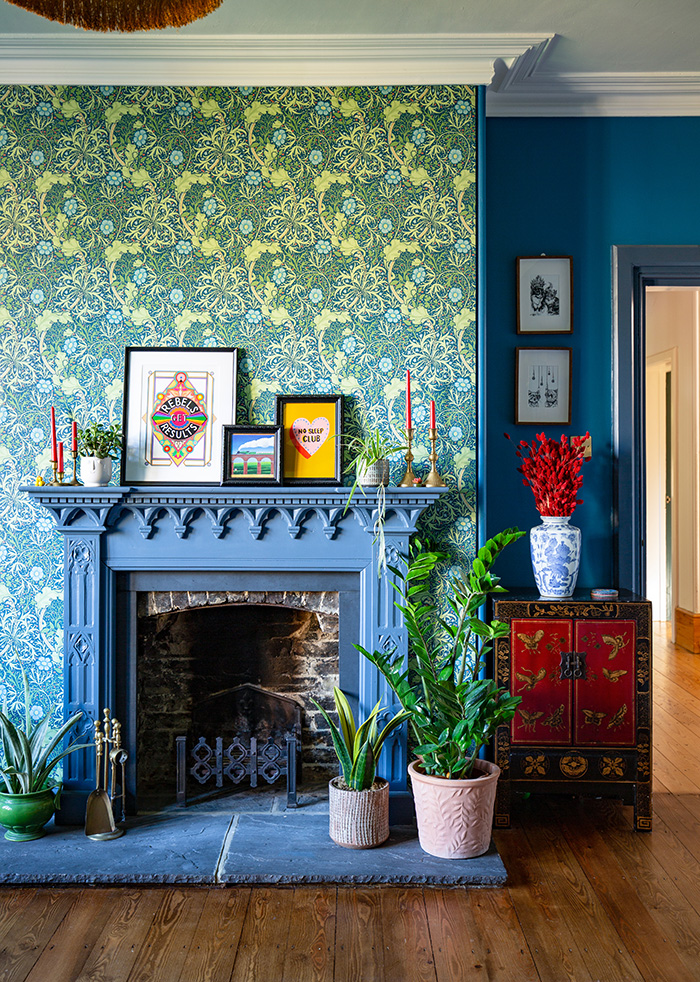
© Tamsyn Morgans
Fire surrounds and inserts
When shopping for an antique insert and surround, be aware that some dealers take cost-cutting short-cuts that can create problems for you in the long run. For example, ill-fitting backs are a common issue according to Sally Vernon, owner of The Antique Fireplace Company.
‘Some dealers use clay backs which are generally too low, so they look very unattractive,’ she says. ‘We go to great lengths to ensure the back supplied is always tall enough for the fireplace opening. It is very common for dealers to photograph antique fireplaces with a piece of painted cardboard behind and a note saying a back and grate is included. It is not a good idea to purchase a fireplace shown like this as there is a great deal of work required to ensure a good fit, and one back will not fit all.’
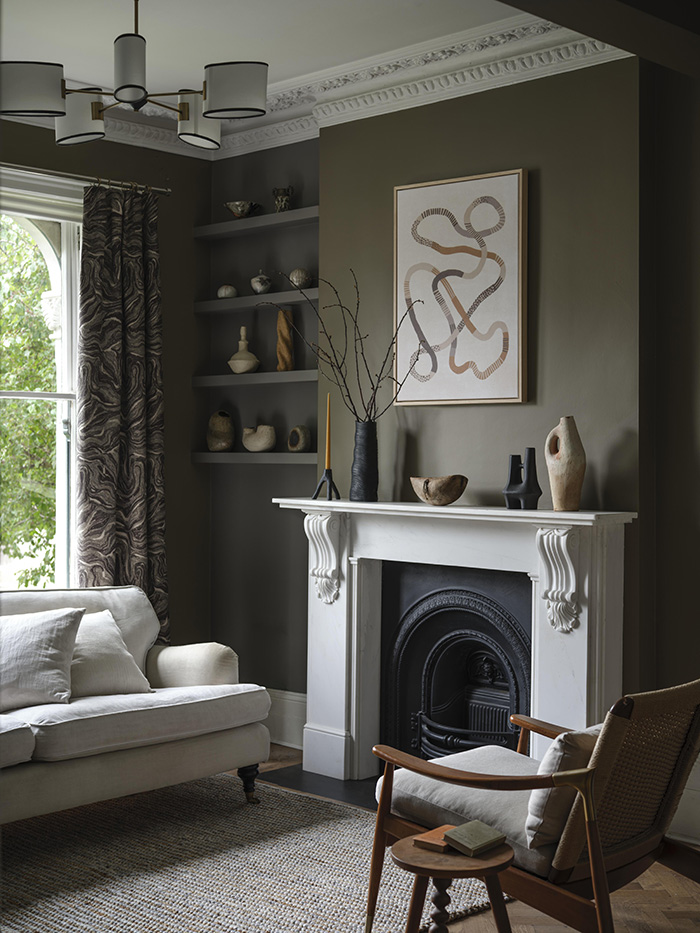
benjaminmoorepaint.co.uk
Some dealers sell fireplaces with reproduction bars that don’t suit the fireplace style and often don’t fit. ‘As there are only around 15 reproduction bars on the market which some dealers use to cover thousands of different fireplaces, they often don’t fit, look awful and undermine the reason for choosing to buy an original fireplace,’ says Sally. ‘We pride ourselves in fitting the correct bar to each fireplace. If we can’t find the right part, we can use archive patterns to have one made in exactly the same way they did in the foundry 140 years ago.’
Another common problem are fireplaces sold with rust on the back, which will corrode over time. ‘We restore the front and back of all our antique cast-iron fireplaces,’ says Sally, ‘applying several coats of red oxide paint to the back to ensure it stays looking good and we finish the front with either traditional grate polish or paint.’ Some restorers only use paint stripper on fireplaces, which won’t remove rust properly, so ensure cast-iron elements have been pressure-cleaned using different grades of aggregate before you buy.
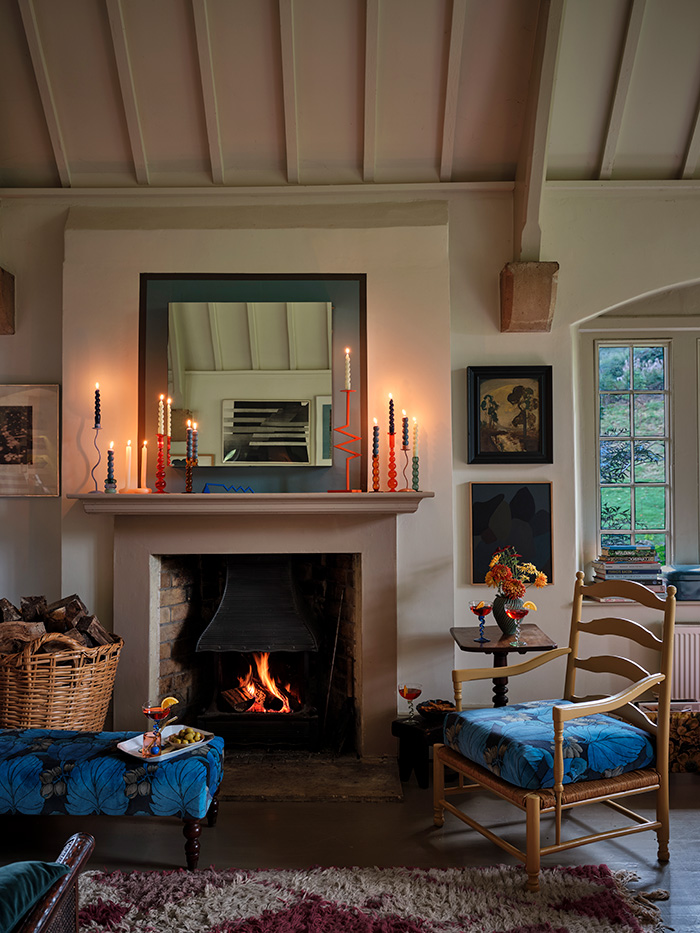
farrow-ball.com
Open chimneybreasts and fire baskets
An open fire with exposed brickwork and a free-standing fire basket can be an affordable choice and one that provides an unfussy, rustic look. You can fit a surround, or just plaster the edges of your fireplace opening (or leave them as bare brick) for a simpler look.
Stand-alone cast-iron fire baskets can be bought for as little as £30 new at DIY stores, but vintage ones are available at a wide range of prices depending on age, size, condition and rarity. You can pick up a reclaimed cast-iron fire basket for around £150 at English Salvage and pairs of vintage fire ‘dogs’ – or ‘andirons’ (decorative metal supports for supporting burning logs in an open fire) – from just £125.
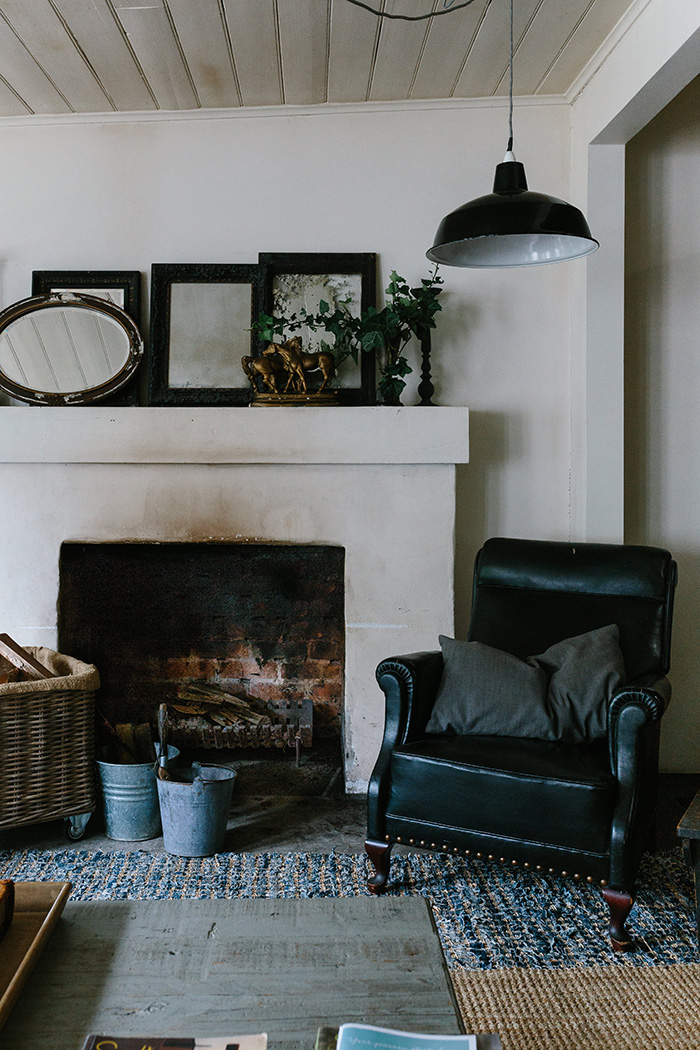
© Marnie Hawson
With any fireplace, you should consult a specialist installer who can advise you when it comes to safety and building regulations. This is particularly important where open fires are concerned, as the interior of your chimneybreast will need to be professionally heat-proofed. Building regulations also demand that you have a hearth made of a slab of non-combustible material that’s of adequate size and thickness.
‘When you’re fitting any fireplace, insist that the original hearth stone is left or, if a new one must be fitted, make sure it’s installed flush with the floorboards,’ advises Kit Wedd. ‘Raised hearth stones are inauthentic and it’s a great shame when it happens.’
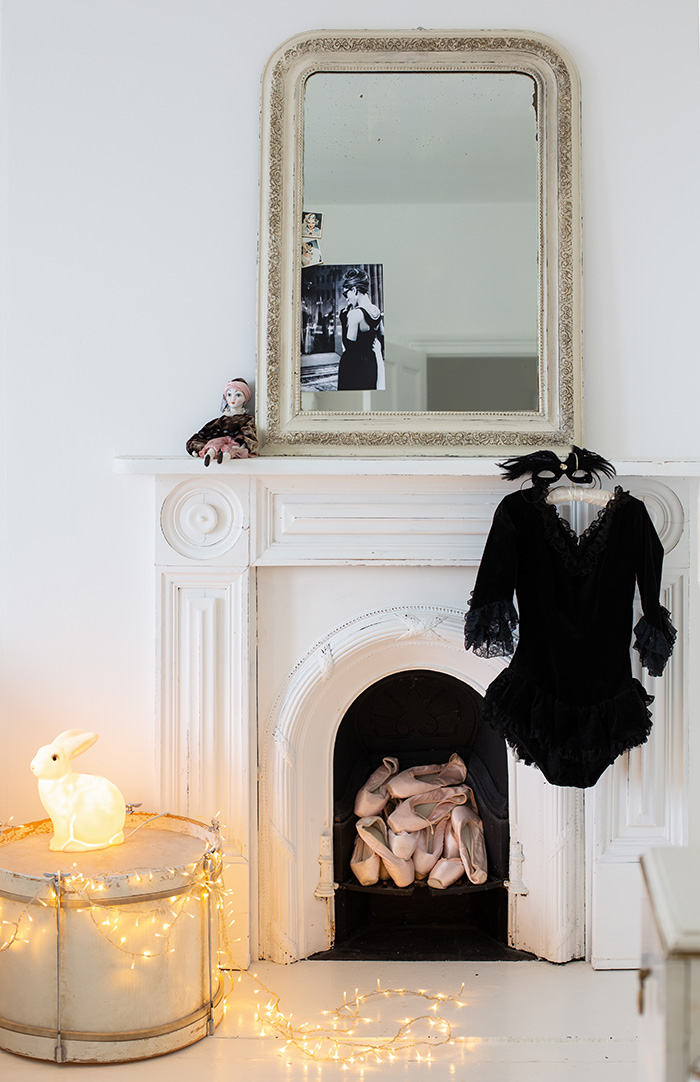
© Tamsyn Morgans
Bedroom fireplaces
Usually smaller than ground-floor fireplaces, bedroom fireplaces were essential for warmth before the introduction of central heating in the 1930s. They fell out of fashion in the 1970s and 1980s when many were boarded up, but they’re easy enough to reinstall – or uncover, if you’re lucky enough to have an original hiding behind layers of plasterboard or wallpaper!
These days, bedroom fireplaces are rarely used for real fires, instead they tend to provide an attractive focal point and a handy mantelpiece. Georgian, Victorian and Edwardian designs are usually made of cast iron with an integrated mantel and are often decorated with elegant patterned mouldings. ‘Poppies were popular motifs for bedroom fireplaces in the early 20th century because they signify sleep,’ says Kit.
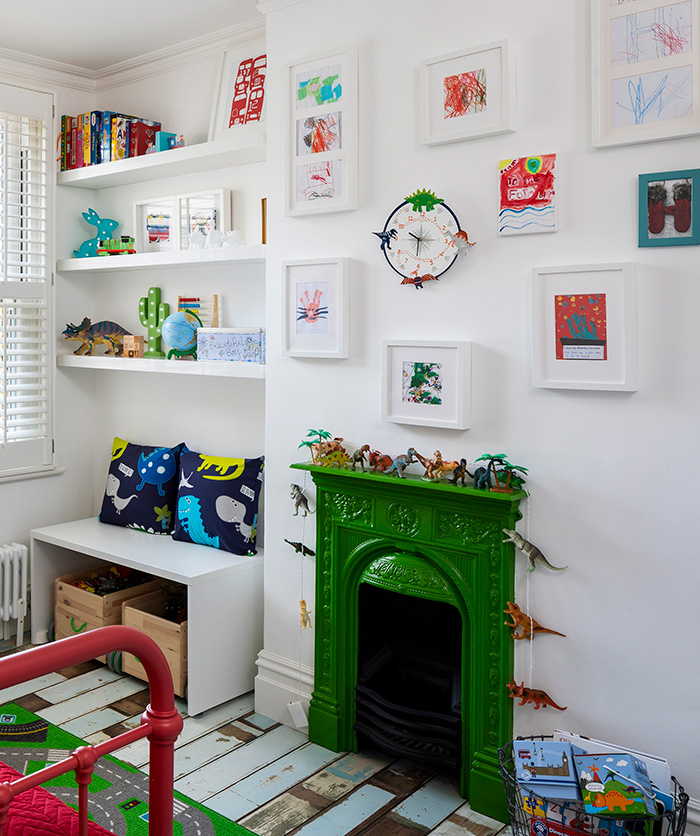
plantation-shutters.co.uk
If you’re not planning to light a real fire in it, one way to refresh a decorative bedroom fireplace is to paint it. Use a special paint formulated to prevent rust from seeping through, such as Hammerite Direct to Rust Metal Paint which acts as a primer, undercoat and topcoat (this paint is flammable, so only suitable for decorative fireplaces). Black gives a traditional finish, but white or paler neutral colours can freshen up your room for a prettier, lighter look. In a child’s bedroom or to make a fun style statement, choose a bright, bold colour instead, to really turn your bedroom fireplace into a standout feature.
WORDS: ELLIE TENNANT
Before you go...
...fancy automatic entry to all future competitions?
Simply register online today for FREE and you will get:
Automatic entry to all current and future competitions.
Access to Reclaim Inspiration - an online visual pinboard for saving all your home and style inspiration.
A regular newsletter of inspiration, ideas and advice.

Save all your articles in one place
Become a Reclaim Member to save all your home and style inspiration. Simply login or register online today for FREE and you will get:
Automatic entry to all current and future competitions.
Access to Reclaim Inspiration - an online visual pinboard for saving all your home and style inspiration.
A regular newsletter of inspiration, ideas and advice.








